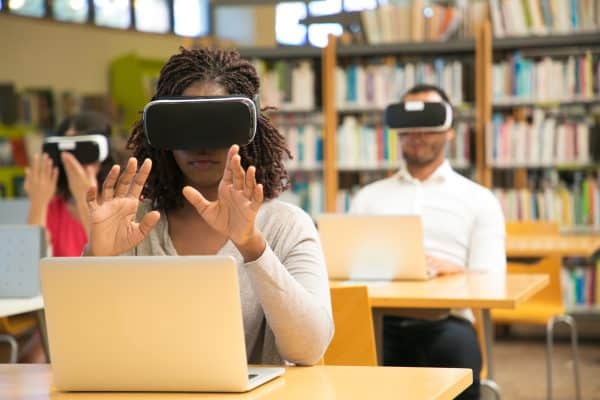
In the modern classroom, technology has become an indispensable tool, transforming the educational landscape in profound ways. Let’s delve deeper into the benefits of integrating technology in education:
Enhanced Learning Experiences
Interactive Learning: Technology enables interactive learning experiences through simulations, virtual labs, and educational games. For example, students studying physics can use simulation software to conduct virtual experiments, enhancing their understanding of complex concepts like gravity or electricity.
Access to Resources: The internet provides a vast array of educational resources that are accessible to students and teachers alike. From online libraries and digital textbooks to educational videos and podcasts, technology opens up a world of information that enriches traditional classroom learning.
Improved Engagement
Personalized Learning: Technology allows for personalized learning experiences tailored to each student’s needs and learning styles. Adaptive learning software, for instance, can adjust the difficulty level of questions based on a student’s performance, ensuring that they are challenged but not overwhelmed.
Gamification: Gamifying learning through educational games and apps can significantly increase student engagement. By incorporating elements such as points, levels, and rewards, educators can make learning more enjoyable and motivating for students.
Preparation for the Digital Age
Digital Literacy: Integrating technology teaches students valuable digital literacy skills, including how to use digital tools responsibly, evaluate online sources, and protect their online privacy. These skills are essential in today’s digital world.
Collaboration: Technology facilitates collaboration among students and teachers. Platforms like Google Workspace and Microsoft Teams allow students to work together on projects in real-time, regardless of their physical location. This fosters teamwork and communication skills vital for success in the modern workplace.
Efficiency and Organization
Streamlined Administration: Technology streamlines administrative tasks for teachers, freeing up more time for instructional activities. For example, grading software can automate the grading process for quizzes and exams, reducing the time spent on manual grading.
Access to Information: Technology provides instant access to a wealth of information, enabling students to conduct research and explore topics in depth. Online databases, academic journals, and e-books give students the tools they need to delve into subjects beyond the scope of their textbooks.
Accessibility and Inclusivity
Accessibility Tools: Technology offers a range of accessibility tools that cater to diverse learning needs. For example, screen readers assist students with visual impairments, while speech-to-text software helps students with dyslexia or other learning disabilities.
Global Learning: Through technology, students can connect with peers and experts from around the world, exposing them to diverse perspectives and cultures. Virtual exchange programs and online collaborative projects promote global citizenship and cultural understanding.
Cost-Effectiveness
Digital Textbooks: Digital textbooks and online resources can be more cost-effective than traditional textbooks, which can be expensive and quickly outdated. Switching to digital materials can save schools and students money in the long run.
The integration of technology in education represents a fundamental shift in the way we teach and learn, offering unprecedented opportunities to enrich the educational experience for students of all ages. By leveraging technology effectively, educators can create dynamic and engaging learning environments that cater to the diverse needs and learning styles of students.
Technology not only enhances traditional teaching methods but also opens up new avenues for exploration and discovery. Through interactive simulations, virtual reality experiences, and online collaborations, students can immerse themselves in learning like never before, gaining a deeper understanding of complex concepts and developing critical thinking skills.
Moreover, technology fosters a culture of collaboration and inclusivity, breaking down barriers of distance and accessibility. Students can connect with peers from around the world, share ideas, and collaborate on projects, gaining valuable perspectives and cultural insights that prepare them for a globalized world.
As we look to the future, it is clear that technology will continue to play a pivotal role in education, transforming the way we teach and learn. By embracing technology and harnessing its power, we can empower students to become lifelong learners, equipped with the skills and knowledge they need to succeed in an increasingly digital and interconnected world.
